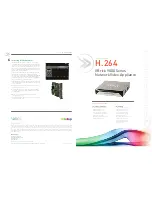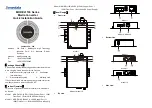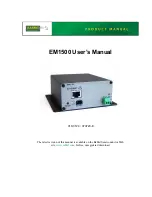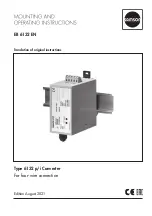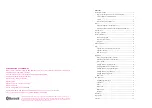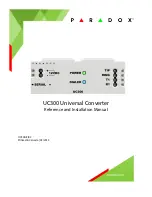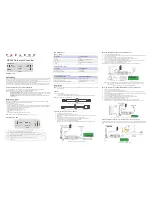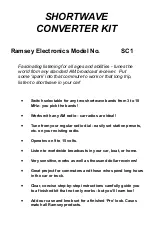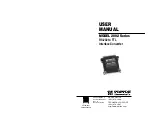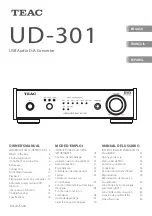
4.1.3 4-WIRE CONNECTION USING TERMINAL BLOCKS
If your RS-485 application requires you to connect two pairs of bare
wires to the Model 2085, you will need to open the case to access the
terminal blocks. The following instructions will tell you how to open the
case, connect the bare wires to the terminal blocks, and fasten the
strain relief collar in place so that the wires won't pull loose.
1. You should already have the case open for the configuration
procedure. If not, open the case according to the diagram in Section
3.2.
2. Strip the outer insulation from the twisted pairs about one inch
from the end.
3. Strip back the insulation on each of the 2 twisted pair wires
about .25".
4. Connect
one pair
of wires to XMT+ and XMT- (transmit positive
and negative) on the terminal block, making careful note of which color
is positive, and which color is negative.
5. Connect the
other pair
of wires to RCV+ and RCV- (receive
positive and negative) on the terminal block, again making careful note
of which color is positive, and which color is negative.
Ultimately, you will want to construct a two pair cross over cable that
makes a connection with the RS-485 device as shown below:
Model 2085
RS-485 Device
XMT+.............................RCV+
XMT-..............................RCV-
RCV+.............................XMT+
RCV-..............................XMT-
11
3.3 DIP SWITCH SETTINGS
All possible settings for the Model 2085’s configuration switches
are presented in Figure 5 (below). Following Figure 5 is a detailed
description of each switch function. If you have additional questions,
contact Technical Support at (301) 975-1000.
*Note:
Switches S1-1 & S1-2 should be switched simultaneously.
Switches S1-7 & S1-8 should also be switched simultaneously.
S1-1 and S1-2: “Transmit Off” Impedance
Switches S1-1 and S1-2 are set together to determine whether the
receiving device “sees” the impedance of the Model 2085’s transmitter
as being “high” or “intermediate” when the transmitter is turned off. The
“intermediate” setting is useful in half-duplex environments where the
receiving device does not respond well to the “high” setting.
S1-1
S1-2
Setting
On
On
Intermediate Impedance
Off
Off
High Impedance
S1-3: RTS/CTS Delay
The setting for switch S1-3 determines the amount of delay
between the time the Model 2085 “sees” RTS and when it sends CTS.
Note
: RTS/CTS Delay setting should be based upon transmission
timing.
S1-3
Setting
On
8 mSec
Off
no delay
6
S1 SUMMARY TABLE
Position
Function
Factory Default
S1-1*
“Transmit Off” Impedance
Off
S1-2*
“Transmit Off” Impedance
Off
S1-3
RTS/CTS Delay
On
8 msec
S1-4
“ECHO” Mode
Off
Echo Off
S1-5
Carrier Control
On
RTS Cont.
S1-6
Receive Impedance
On
120 Ohm
S1-7*
2-Wire/4-Wire
On
S1-8*
2-Wire/4-Wire
On
High Z
2-Wire
}
Figure 5.
Summary of DIP switch default settings for set S1
}






















